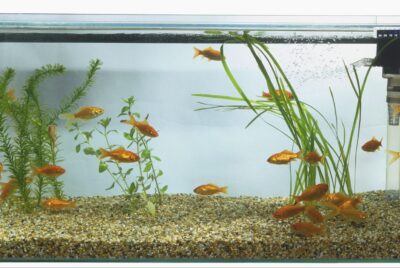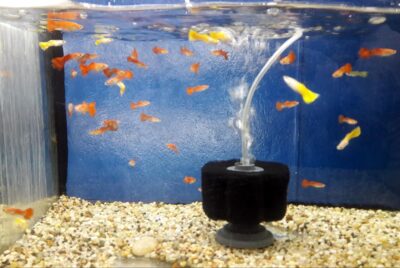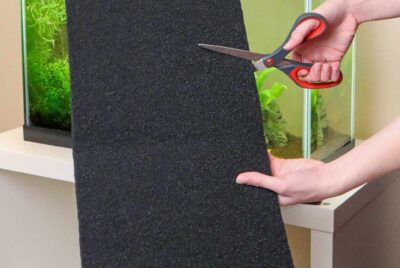How to Get Rid of Protein Foam in Aquarium
Starting as a devoted aquarist, understanding “How to Get Rid of Protein Foam in Aquarium” is essential for maintaining a lively and healthy underwater ecosystem. Protein foam, also known as aquarium foam or fish tank foam, when present, can negatively impact both the aesthetics and health of your aquatic world.
In this comprehensive guide, we will delve into the world of protein foam, exploring its causes, effects, and, most importantly, effective strategies to get rid of it. So, let’s dive in and reclaim the crystal-clear serenity of your aquarium!
Understanding Protein Foam in Aquariums
What is Protein Foam?
Protein foam refers to the layer of bubbles that forms on the water’s surface in your aquarium. This foam consists of organic compounds, primarily proteins, that accumulate and create a visible layer. While small amounts of foam can be normal, excessive foam can be a sign of underlying issues.
Why does Protein Foam Occur in Aquariums?
The occurrence of protein foam can be attributed to the presence of excess organic compounds in the water. These compounds can originate from various sources, such as uneaten food, fish waste, decaying plant matter, and other organic debris. When these organic compounds combine with air, they create bubbles that form the foam on the water’s surface.
Causes of Protein Foam in Aquariums
To effectively combat protein foam, it’s crucial to identify its root causes. By addressing these causes, you can prevent its formation and maintain a healthy aquatic environment. Here are the main culprits behind protein foam:
1. Overfeeding (How to Get Rid of Protein Foam in Aquarium)
Overfeeding your fish is one of the primary causes of protein foam. When fish are provided with more food than they can consume, the excess food breaks down and releases organic compounds into the water, contributing to foam formation. It’s essential to feed your fish an appropriate amount and ensure they consume the food within a few minutes.
2. Poor Water Quality (How to Get Rid of Protein Foam in Aquarium)
Inadequate water quality can also lead to protein foam. When the aquarium water is contaminated with pollutants, such as ammonia or nitrite, organic compounds accumulate, resulting in foam formation. Regular water testing and proper maintenance are vital to prevent these water quality issues.
3. High Protein Levels (How to Get Rid of Protein Foam in Aquarium)
Certain fish foods contain high protein levels, which can contribute to excessive protein in the water. When protein levels become too high, the surplus proteins combine with air, creating foam. Choosing a balanced fish food with an appropriate protein content can help prevent excessive foam production.
Effects of Protein Foam in Aquariums
Protein foam may seem harmless at first glance, but it can have detrimental effects on your aquarium’s ecosystem and the well-being of your fish. Understanding these effects highlights the importance of addressing protein foam promptly. Here are the main effects to be aware of:
1. Oxygen Depletion (How to Get Rid of Protein Foam in Aquarium)
Protein foam can obstruct the exchange of oxygen between the water and the atmosphere. The foam layer reduces surface area and restricts the diffusion of oxygen into the water. This can lead to reduced oxygen levels, causing stress to your fish and other aquatic inhabitants.
2. Altered pH Levels (How to Get Rid of Protein Foam in Aquarium)
As protein foam breaks down, it releases acids that can lower the pH of the water. This alteration in pH can create an unfavorable environment for your fish and plants. It’s crucial to maintain stable pH levels within the appropriate range for your specific aquarium inhabitants.
3. Impaired Fish Health (How to Get Rid of Protein Foam in Aquarium)
If left unaddressed, protein foam can become a breeding ground for harmful bacteria and fungi. These microorganisms thrive in the organic-rich environment created by the foam, potentially leading to fish diseases and compromised health. It’s essential to maintain a clean and healthy aquarium environment to safeguard the well-being of your fish.
Tips to Get Rid of Protein Foam in Aquariums
Now that we’ve explored the causes and effects of protein foam, let’s dive into an expanded and detailed set of strategies to effectively eliminate it from your aquarium. By implementing these tips, you can restore the clarity and balance of your aquatic paradise and ensure the well-being of your fish.
1. Regular Water Changes
Performing regular water changes is a fundamental aspect of aquarium maintenance and an effective way to combat protein foam. When you change a portion of the water, you dilute the organic compounds responsible for foam formation.
Aim for weekly or bi-weekly water changes, removing approximately 20-30% of the aquarium water. Use a siphon or a gravel vacuum to clean the substrate and remove any accumulated debris. Be cautious not to disturb the beneficial bacteria residing in the filter media.
2. Proper Feeding Practices
Establishing appropriate feeding practices is crucial in preventing protein foam. Overfeeding is a significant contributor to foam formation, so it’s essential to feed your fish an amount they can consume within a few minutes.
Remove any uneaten food promptly using a net or a turkey baster to minimize organic waste in the aquarium. Consider feeding your fish multiple small meals throughout the day rather than one large meal to ensure they consume all the food.
3. Use of Protein Skimmers
Investing in a quality protein skimmer is highly beneficial for foam reduction. Protein skimmers, also known as foam fractionators, are mechanical devices designed to remove dissolved organic compounds from the water column before they accumulate and create foam.
They work by creating air bubbles that attract and bind to the organic compounds, forming a foam that is then collected and removed from the aquarium. Install a protein skimmer suitable for the size of your aquarium and follow the manufacturer’s instructions for optimal performance. Regularly clean and maintain the skimmer to ensure its efficiency.
4. Adding Surface Agitation
Increasing surface agitation in your aquarium helps break down protein foam and enhances oxygen exchange. You can achieve this by using an air stone, a powerhead, or adjusting the flow rate of your filtration system. The movement of the water disrupts the foam, causing it to dissipate. Place the air stone or powerhead near the water’s surface to create agitation and promote better gas exchange. Be cautious not to create excessive turbulence that may stress your fish.
5. Optimizing Filtration
Ensuring efficient filtration is paramount in preventing protein foam. Incorporate mechanical and biological filtration systems to remove organic compounds effectively. Mechanical filtration, such as filter floss or sponge, physically traps solid waste and debris. Biological filtration, provided by beneficial bacteria in the filter media, helps break down organic compounds into less harmful substances.
Regularly clean or replace filter media to maintain optimal filtration performance and prevent the accumulation of organic matter that contributes to foam formation.
6. Maintaining Good Water Quality
Consistently monitoring and maintaining good water quality are crucial in combating protein foam. Regularly test the water parameters, including ammonia, nitrite, nitrate, pH, and temperature, and take corrective measures as needed.
These parameters should remain within the appropriate ranges for your specific aquarium inhabitants. High ammonia and nitrite levels indicate poor water quality and can contribute to foam formation. Perform partial water changes to reduce these toxins and maintain a clean and healthy environment for your fish.
7. Consider Live Plants
Adding live plants to your aquarium can help combat protein foam by absorbing excess nutrients, including organic compounds, thus minimizing foam formation. Plants act as natural filters, utilizing nutrients for growth and photosynthesis. Floating plants, such as Water Sprite (Ceratopteris thalictroides) or Water Lettuce (Pistia stratiotes), are particularly effective in absorbing nutrients from the water surface.
Fast-growing stem plants, such as Hornwort (Ceratophyllum demersum) or Water Wisteria (Hygrophila difformis), also contribute to nutrient uptake and overall water quality improvement. Ensure proper lighting and nutrient supplementation to support plant growth while preventing algae outbreaks.
8. Beneficial Bacteria Supplements
Introducing beneficial bacteria supplements can aid in the breakdown of organic waste and prevent foam formation. These supplements contain strains of nitrifying bacteria that help convert toxic ammonia and nitrite into less harmful nitrate through the nitrogen cycle.
Beneficial bacteria supplements can be found in liquid or powder form and are added to the aquarium according to the manufacturer’s instructions. They assist in maintaining a healthy biological balance, reducing the likelihood of protein foam occurrence.
9. Avoid Chemical Overload
While it may be tempting to use chemical clarifiers or foam reducers to quickly eliminate protein foam, it’s important to exercise caution. Chemical additives can disrupt the delicate balance of your aquarium’s ecosystem and may harm your fish and beneficial bacteria if not used correctly. Additionally, these products may only provide temporary relief from foam without addressing the underlying causes.
It is generally best to focus on natural and proactive solutions, such as proper maintenance, filtration, and feeding practices.
10. Address Underlying Issues
To effectively combat protein foam in the long term, it’s crucial to address any underlying issues that contribute to its formation. Regularly assess the health and behavior of your fish to detect any signs of stress or illness.
Poor water quality, overstocking, inadequate filtration, or imbalanced nutrient levels can all contribute to foam formation. By addressing these issues and maintaining a healthy and well-balanced aquarium, you can minimize the chances of protein foam occurrence.
Remember, each aquarium is unique, and finding the right combination of strategies may require some experimentation. Be patient and observant as you implement these tips, and adjust accordingly to achieve the desired results. With proper care and attention, you can successfully eliminate protein foam and create a thriving and visually stunning aquatic environment.
Preventing Protein Foam in Aquariums
Prevention is always better than cure when it comes to protein foam in aquariums. By taking proactive measures to prevent foam formation, you can maintain a clean and healthy aquatic environment for your fish. Here are some detailed strategies to help you prevent protein foam:
1. Consistent Maintenance Routine
Establish a consistent maintenance routine for your aquarium. Regular maintenance is essential in preventing the accumulation of organic compounds and maintaining optimal water quality. This routine should include:
- Regular water changes: Replace a portion of the water on a weekly or bi-weekly basis to dilute any potential buildup of organic compounds. Vacuum the substrate during water changes to remove accumulated debris.
- Clean filters: Regularly clean or replace filter media to ensure efficient filtration. Clogged or dirty filters can lead to reduced water flow and increased organic buildup.
- Test water parameters: Regularly test the water for ammonia, nitrite, nitrate, pH, and other relevant parameters. Monitoring these levels will help you detect any imbalances and take corrective measures promptly.
- Remove excess waste: Use a net or turkey baster to remove any uneaten food, fish waste, or decaying plant matter from the aquarium. These organic materials can contribute to foam formation if left to accumulate.
2. Choosing the Right Filtration System
Selecting an appropriate filtration system for your aquarium is crucial in preventing protein foam. Consider the following factors when choosing a filtration system:
- Size and capacity: Ensure that the filtration system is suitable for the size of your aquarium and the number of fish you have. A system that is too small or inadequate for your aquarium’s needs may not effectively remove organic compounds, leading to foam formation.
- Mechanical and biological filtration: Choose a filtration system that incorporates both mechanical and biological filtration. Mechanical filtration removes solid waste and debris, while biological filtration utilizes beneficial bacteria to break down organic compounds.
- Consider supplemental equipment: Depending on the needs of your aquarium, consider using additional equipment such as protein skimmers or canister filters. These devices can provide enhanced filtration and further prevent the buildup of organic matter.
3. Balancing Feeding Habits
Maintaining a balanced feeding regimen is crucial in preventing protein foam. Follow these guidelines for optimal feeding practices:
- Feed appropriate amounts: Avoid overfeeding your fish, as excess food leads to organic waste buildup. Feed your fish an amount they can consume within a few minutes. If there is uneaten food after this time, remove it from the aquarium.
- Feed a varied diet: Provide your fish with a balanced diet that includes a variety of high-quality commercial fish foods. Avoid feeding excessive amounts of protein-rich foods, as they can contribute to foam formation.
- Consider occasional fasting: Occasionally fasting your fish for a day or two can help regulate their digestive systems and prevent excessive organic waste production.
4. Live Plants
Introducing live plants to your aquarium provides numerous benefits, including foam prevention. Live plants help maintain water quality by absorbing excess nutrients, including organic compounds that can contribute to foam formation. Consider adding fast-growing plants such as Hornwort (Ceratophyllum demersum) or Water Wisteria (Hygrophila difformis) that efficiently absorb nutrients and promote a healthy aquatic environment.
5. Regular Water Testing
Regularly test your aquarium water to ensure optimal conditions and prevent foam formation. Monitor parameters such as ammonia, nitrite, nitrate, pH, and temperature. Regular testing allows you to detect any imbalances or issues early on and take appropriate corrective measures.
6. Avoid Overstocking
Properly manage the number of fish and the overall stocking density in your aquarium. Overstocking leads to increased organic waste production and can contribute to protein foam formation. Research the specific requirements and compatibility of the fish species you intend to keep to ensure a harmonious and balanced aquarium ecosystem.
7. Avoid Overuse of Chemical Additives
While there are various chemical additives available on the market claiming to eliminate protein foam, it’s best to avoid their overuse. Chemical additives can disrupt the natural balance of your aquarium and harm the beneficial bacteria that play a vital role in maintaining water quality. Only use these additives as a last resort and follow the instructions carefully.
By implementing these preventive measures and maintaining a regular aquarium maintenance routine, you can effectively prevent protein foam formation and create a healthy and visually pleasing aquatic environment for your fish to thrive in.
Conclusion
Protein foam can be a challenging issue to tackle in your aquarium, but armed with knowledge and the right strategies, you can successfully overcome it. By understanding the causes, effects, and prevention techniques outlined in this guide, you can create an optimal environment for your fish, free from the bothersome presence of protein foam.
Remember, a clean and well-maintained aquarium not only enhances the beauty of your aquatic world but also ensures the health and happiness of your beloved fish.
Frequently Asked Questions
Q: Can protein foam harm my fish?
A: Yes, protein foam can have negative effects on your fish. It can cause oxygen depletion, alter pH levels, and create an environment conducive to the growth of harmful microorganisms, leading to fish diseases and compromised health.
Q: How often should I perform water changes to reduce protein foam?
A: Performing weekly or bi-weekly water changes of 20-30% can help dilute the organic compounds responsible for foam formation. However, the frequency and amount may vary depending on the specific needs of your aquarium.
Q: Can a protein skimmer eliminate protein foam entirely?
A: While a protein skimmer can significantly reduce protein foam, it may not eliminate it entirely. It is important to combine the use of a protein skimmer with other preventive measures and regular maintenance routines for optimal results.
Q: Are there any natural remedies for reducing protein foam in aquariums?
A: Some fishkeepers find that adding live plants, such as floating plants or fast-growing stem plants, can help reduce protein foam. These plants absorb excess nutrients, including organic compounds, thus minimizing foam formation. However, it’s important to maintain a balance between plant growth and nutrient levels to avoid other potential issues.
Q: Is protein foam more common in saltwater or freshwater aquariums?
A: Protein foam can occur in both saltwater and freshwater aquariums. However, due to the higher protein content in saltwater environments, protein foam may be more prevalent in saltwater aquariums. Implementing effective protein skimming and maintaining excellent water quality are essential for saltwater aquariums to combat foam-related issues.





